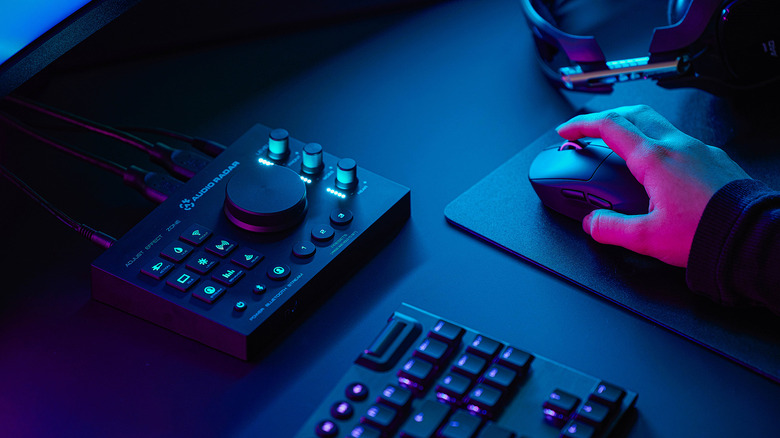This 'Audio Radar' Experience Enables Gamers To See Sound
According to the Entertainment Software Association, 65% of Americans play video games, which is equal to approximately 213 million weekly players. Global estimates peg player numbers at around 3.26 billion. So, a lot of people are frolicking through the matrix.
Meanwhile, the World Health Organization believes more than 430 million people (5% of the world's population) have disabling hearing loss, and over 1.5 billion people globally have hearing loss in at least one ear. If those statistics weren't sobering enough, the National Institute on Deafness and Other Communication Disorders (NIDCD) believes that almost 30 million adults in the United States alone would benefit from hearing aids. So again, that's a lot of people.
Sound is an integral part of every video game, especially for first-person shooters and PvP battle royale-type games where audio cues let players know what direction an enemy is coming from or provide some other relevant environmental alert. Those with hearing problems can miss essential strategic elements of the game, which puts them at a distinct disadvantage.
Airdrop Gaming, makers of HipShotDot (the red dot sight attachment for first-person shooters), is determined to help level the playing field by giving hearing-impaired gamers a fighting chance by showing them a way to "see the sound" and "Hear everything with your eyes" (the product tagline).
Audio Radar is a plug-and-play hardware device that works on PCs and consoles and translates 7.1 surround sound (even when using 2.1 headphones or budget-friendly gaming headsets) output into visual cues via light bars attached around the edges of a gaming monitor or screen.
Hearing everything with your eyes
Audio Radar's Command Center sits between your gaming platform of choice and your monitor via HDMI cables, with no additional software or cables required. The unit then turns the surround sound audio output — whether it be gunshots, footsteps from approaching enemies, or the sound of passing vehicles, etc. — into data that subsequently fires off the appropriate RGBW lightbars.
Two lightbars are attached to the top and bottom, and one on each side, giving context to the player's sound and situational awareness. Green LED lights mean the sound is far away, yellow means it's closer, and red means it's nearly on top of you. Not only that, but the lights react to the sound's intensity, with smaller flashes indicating the noise is further away.
The Command Center has several fully customizable buttons and dials that let each player personalize their game scenes and presets (selfie, streaming, etc.). The light form patterns and noise-detection sensitivity can be adjusted and personalized. The RGBW lightbars can reproduce 16 million colors, from "warm whites to vivid reds," and have a "selfie mode" that triggers all the lights to shine a bright white.
When Audio Radar launched in mid-December 2023, it immediately sold out its inventory of several hundred at $399 a pop. You can pre-order for the next batch on their website now (at the same price), and if that round goes well, AirDrop CEO Tim Murphy says it will be able to ramp up manufacturing to scale, which should help drive down the cost. Hopefully, Audio Radar doesn't become just one of those gaming peripherals that were a pain for its users.
